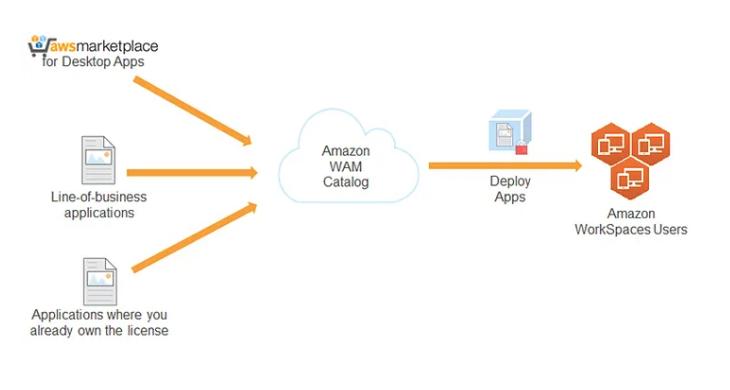WorkSpaces Application Manager: Scaling Application Deployment

WorkSpaces Application Manager solved the problem we couldn’t solve with GA: how to manage Microsoft Office updates across 1M+ workspaces without downtime.
The Problem Every Enterprise Customer Hit
After a year of WorkSpaces deployments, customers had thousands of workspaces. Then:
Scenario: Microsoft Office patch Tuesday
Old way:
- Download Office update
- Test on isolated machine (1 day)
- Rebuild golden image with new Office (4 hours)
- Terminate 5,000 workspaces
- Reprovision from new image (overnight)
- Users lose all desktop customizations 😡
Users lost a full day of productivity every month.
What WAM Did
WAM separated base OS from applications. Instead of golden images containing everything, we had:
- Base Image: Windows (versioned, rarely updated)
- App Bundles: Office, Adobe, Slack, etc. (versioned independently)
- User Profile: Desktop settings, installed fonts, preferences
- Data: User files (on EBS)
Now Office patch Tuesday:
- Create new Office bundle version (15 minutes)
- Test with 10 users (1 hour)
- Deploy to all users in background (30 minutes, no downtime)
- If broken, instant rollback
Users: zero downtime. IT: one-hour lead time instead of 24 hours.
The Traction
WAM adoption was instant:
- Deployment velocity: 20x faster (from days to minutes)
- Rollback safety: Full version history; any bad patch could be reverted instantly
- Compliance: Every app version tracked with audit trail (critical for healthcare/finance)
- Cost: Reduced IT labor by 40% (less firefighting, fewer reprovisioning windows)
By end of 2015: 50K+ workspaces using WAM. Enterprises shifted from “WorkSpaces is for startup remote workers” to “WorkSpaces is our standard desktop.”
What We Learned
Three insights reshaped how I thought about infrastructure:
Layering beats monoliths: Monolithic images (OS + apps) break easily. Layered bundles iterate safely.
Versioning + rollback > prevention: You can’t prevent all bugs. But you can rollback in seconds. This confidence makes users want updates.
Operational simplicity wins deals: WAM didn’t have 10x the performance. It had 10x fewer update headaches. That was enough to convert skeptics.
The Broader Pattern
WorkSpaces + WAM showed that cloud infrastructure doesn’t just replace on-prem. It reimagines the operational model.
On-prem: golden images, batch updates, scheduled downtime. Cloud: versioned bundles, instant rollback, zero-downtime deployments.
This pattern would repeat everywhere at AWS:
- EC2: versions and AMIs
- Kubernetes: versioned container images
- Lambda: versioned functions
- Databases: point-in-time recovery
The theme: make versioning and rollback first-class concepts. That’s how cloud infrastructure scales to enterprise size without becoming operational hell.